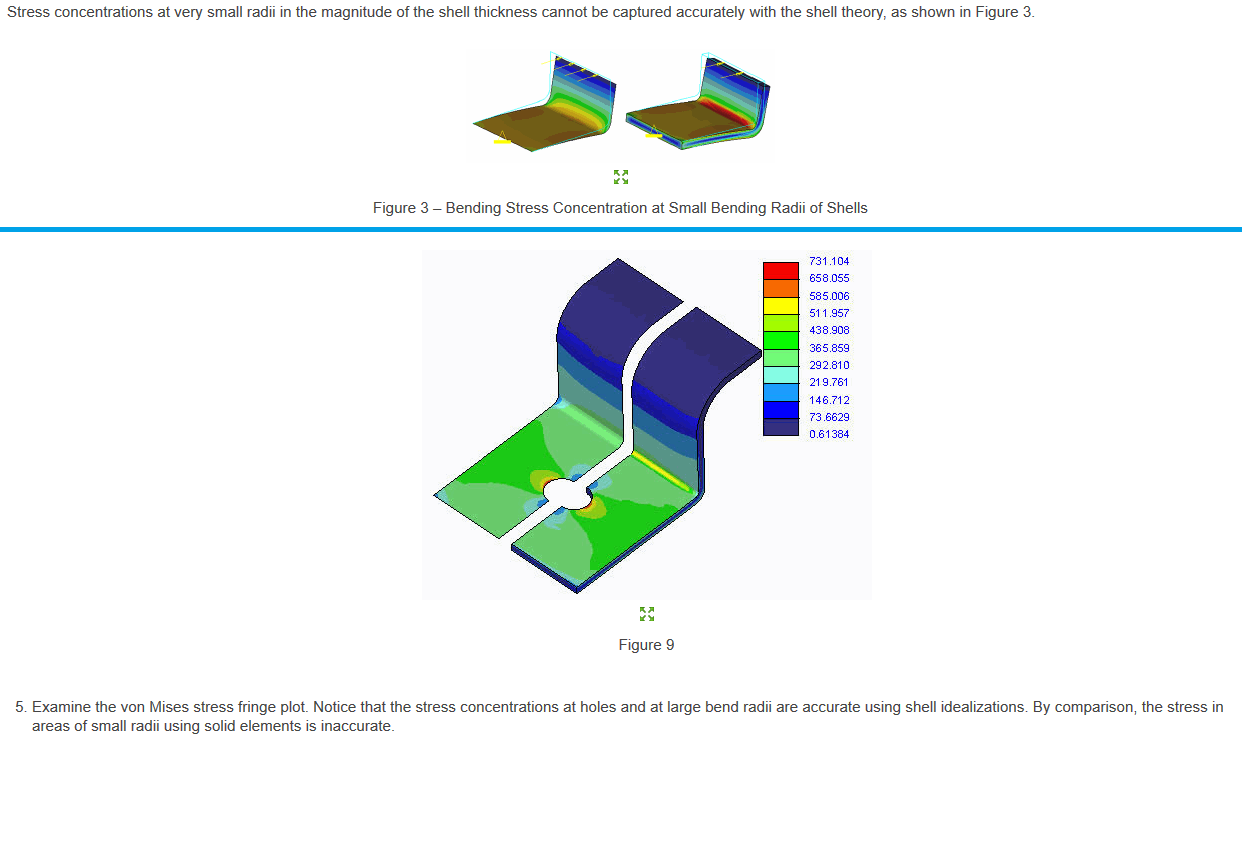Community Tip - Your Friends List is a way to easily have access to the community members that you interact with the most! X
- Community
- Creo Elements Direct
- Drafting
- Shell Accuracy, small radii
- Subscribe to RSS Feed
- Mark Topic as New
- Mark Topic as Read
- Float this Topic for Current User
- Bookmark
- Subscribe
- Mute
- Printer Friendly Page
Shell Accuracy, small radii
- Mark as New
- Bookmark
- Subscribe
- Mute
- Subscribe to RSS Feed
- Permalink
- Notify Moderator
Shell Accuracy, small radii
Following the e-Learning program.
First they say that shells are not very accurate at areas of small radii. Then they say that in comparison with shells, solid elements are not accurate at areas of small radii.
So, models with small radii, (as a bike for example), should be simulated using shells idealizations or solid elements?

This thread is inactive and closed by the PTC Community Management Team. If you would like to provide a reply and re-open this thread, please notify the moderator and reference the thread. You may also use "Start a topic" button to ask a new question. Please be sure to include what version of the PTC product you are using so another community member knowledgeable about your version may be able to assist.
Solved! Go to Solution.
- Labels:
-
General
Accepted Solutions
- Mark as New
- Bookmark
- Subscribe
- Mute
- Subscribe to RSS Feed
- Permalink
- Notify Moderator
I would start with shells (if possible) and even take out the small radii at first. Then see what the stress in your model looks like. These radii probably don't cause any stress concentrations at all, due to the overall shape of your part. If one of these small radii does show a high stress you may be forced to use solid elements, because -as you showed in your first post- the thickness may be too thick to get good results with shells. In that case it may be possible to model only a detail of your part with solids, and apply known displacements or forces at the boundaries.
- Mark as New
- Bookmark
- Subscribe
- Mute
- Subscribe to RSS Feed
- Permalink
- Notify Moderator
For reference, a bike snapshot:

- Mark as New
- Bookmark
- Subscribe
- Mute
- Subscribe to RSS Feed
- Permalink
- Notify Moderator
there are several factors you are dealing with that will throw off your numbers. Most importantly is the facet size and distribution. That is what the analysis is done on. Small rounds and fillets may just look like a chamfer. Default analysis settings won't do these areas justice.
As for the cosmetic rounds pointed out in the image, they mean very little to the overall analysis. I may even remove them for a simpler analysis.
So you know, I am not an analysis guy, but in almost every instance where I've reviewed or provided input for analysis, the model was always simplified geared to the study being performed.
- Mark as New
- Bookmark
- Subscribe
- Mute
- Subscribe to RSS Feed
- Permalink
- Notify Moderator
I would start with shells (if possible) and even take out the small radii at first. Then see what the stress in your model looks like. These radii probably don't cause any stress concentrations at all, due to the overall shape of your part. If one of these small radii does show a high stress you may be forced to use solid elements, because -as you showed in your first post- the thickness may be too thick to get good results with shells. In that case it may be possible to model only a detail of your part with solids, and apply known displacements or forces at the boundaries.
- Mark as New
- Bookmark
- Subscribe
- Mute
- Subscribe to RSS Feed
- Permalink
- Notify Moderator
Thanks Antonius and Patrick for your help!





